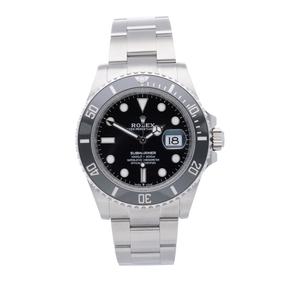watch glasses
While other features of a watch, such as the movement or complications, are frequently discussed, one component often receives some neglect: the watch crystal. We aim to change that with this article! The following article is all about watch crystals and the differences between the various watch crystal materials.
The importance of watch glasses: Why they offer more than just protection
The crystal is an essential component of every watch. It protects the dial and hands from dust and dirt, keeps water out, and protects the sensitive components from direct contact. The crystal allows for optimal time reading, and with a high-quality, carefully treated crystal, its clarity and transparency will not diminish over decades. While a wristwatch's crystal primarily serves a purely practical purpose, its influence on the appearance of a timepiece should not be underestimated. An undamaged crystal with an elegant curve can create an absolutely sophisticated effect, ensuring that the dial is shown to its best advantage and thus significantly influencing the appearance of a watch.
Sapphire crystal
Sapphire crystal has been used in wristwatches since the 1980s. This is synthetic sapphire, a material characterized by its hardness and durability. This synthetic crystal now enhances numerous brand-name watches and contributes to their hefty price tag. The production of sapphire crystal is comparatively complex, which drives up costs. Therefore, sapphire crystal, with a hardness of 9 Mohs, almost approaching that of a diamond, is predominantly found above the exquisite dials of luxury watches.
mineral glass
When it comes to mineral glass, a distinction must be made between untreated and hardened glass. Untreated mineral glass is similar to window glass. This type of mineral glass is relatively easily damaged. Although it is significantly harder than plastic, it is still quite susceptible to scratches and is not immune to breakage under heavy loads. Mineral glass can be hardened using a chemical process, making watch glasses significantly more robust.
plastic glass
Plastic glass is the lightweight among watch crystals. Often referred to as Hesalit glass, Plexiglas, or acrylic glass, plastic crystals exhibit remarkable impact resistance, but also a low density. This means they are quite soft—especially compared to sapphire crystals—and therefore easily scratched.
Advantages and disadvantages of watch glasses
All common types of watch glasses have their advantages and disadvantages. We would like to provide a clear comparison of these here to enable a direct comparison.
Regarding the previously mentioned hardness of the materials, sapphire stands out particularly positively. Marks on the hard glass are often not scratches, but merely abrasions caused by contact with softer materials on the outside. These can be easily removed. The situation is different with plastic glasses: They scratch comparatively quickly but are easy to polish, meaning that removing fine scratches is usually straightforward. In terms of hardness, mineral glasses are in the happy medium. Mineral glass is more scratch-resistant than plastic glass, but more demanding to polish. If mineral glass watch glasses break, the possibility of fine splinters penetrating the movement cannot be ruled out. In the worst case, this can result in serious damage to the watch mechanism. This is precisely the risk reduced by the hardening treatment of the glass.
The clear advantage of plastic watch glass: It's wonderfully lightweight and non-reflective. This is precisely where the disadvantage of sapphire glass lies. Sapphire glass is known for its strong light refraction and the resulting reflections, which can significantly obscure the view of the watch depending on the light incidence. To counteract this, special coatings are often applied to the glass, which can significantly reduce reflections. However, with proper care, sapphire and mineral glass remain absolutely clear for many years and decades, whereas inferior plastic watch glass can become cloudy and yellow under certain circumstances. This is due, among other things, to the effect of UV radiation on the material.
Another distinguishing feature: Plastic crystals have an osmotic property. They are therefore not necessarily completely waterproof. For this reason, they are usually reinforced in diving watches and are usually used in particularly thick shapes. In contrast, watch crystals made of sapphire and mineral glass are not osmotic.
How do I recognize the best watch glass?
Which material is best for watch crystals ultimately depends largely on the wearer's individual preferences. All well-crafted watch crystals offer protection against dust and other contaminants, thus fulfilling their primary purpose. However, several important aspects should be considered when choosing a watch crystal. First and foremost, you should consider which features and characteristics are particularly important to you personally. If, for example, you want an extremely lightweight watch crystal, plastic crystals are a good choice. However, if durability and a touch of luxury are important to you, sapphire crystal is the obvious choice.
In any case, it's essential to gather detailed information and, if necessary, seek professional advice. After all, all watch crystals have their pros and cons, which you should be aware of before making a purchase in order to make the best choice.
Conclusion
From Plexiglas to mineral crystals to sapphire crystal, various proven materials are used in watches today. Which watch crystal is best suited for a particular case depends on the wearer's priorities, budget, and intended use of the watch. In any case, it's worthwhile to take a closer look at the fascinating topic of watch crystals in order to properly classify the characteristics that differentiate the options and keep them in mind when purchasing a watch.















